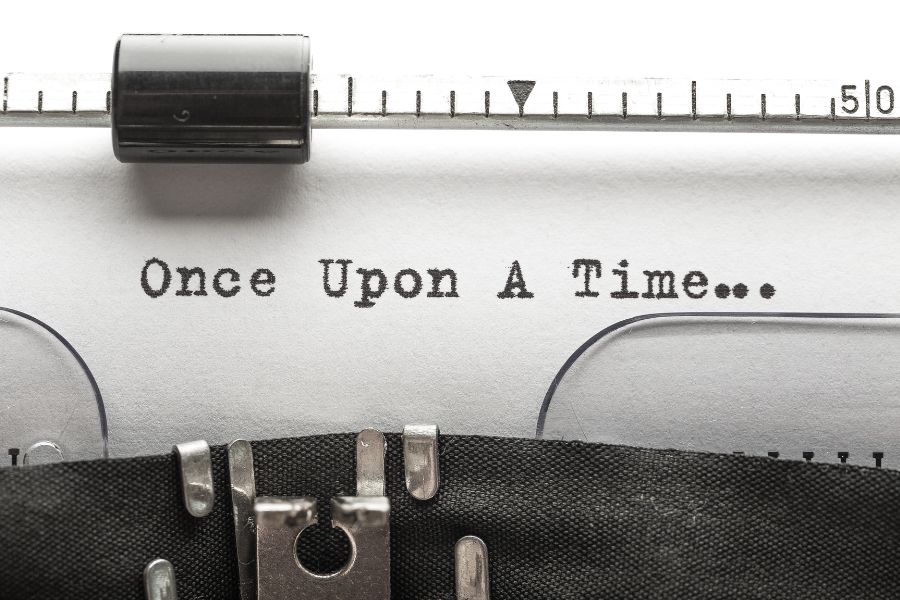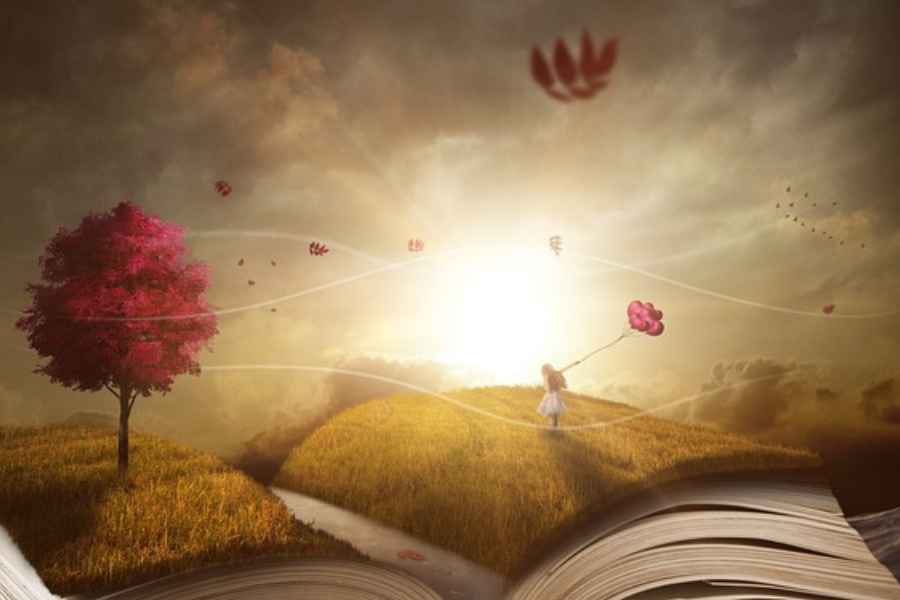“What is a plot?” It’s a question many a budding writer or avid reader has pondered.
Because a plot isn’t merely a string of events. It’s the foundation upon which unforgettable stories are built.
The plot is paramount in stories ranging from timeless classics like Shakespeare to more modern pop movies like Lord of the Rings.
Through this guide, you’ll learn about key distinctive plot types and gain the tools to craft narratives that resonate deeply.
With a keen understanding of plot, you can elevate your storytelling, breathing life into characters and creating worlds that captivate audiences.
Ready to learn more?
Let’s begin.

What is a Plot?
At its core, a plot is the sequence of events or actions that make up a story. But it’s so much more than just a random assortment of happenings.
Think of a plot as setting the stage for your narrative. It’s a designed pathway, leading readers or viewers through a world you’ve created, navigating them through highs, lows, challenges, and resolutions.
Take J.K. Rowling’s Harry Potter as an example. The story isn’t merely about a boy who goes to a wizarding school; it’s a journey through his battles against dark forces, friendships, discoveries, and personal growth.
Now, while the plot gives structure, it differs from mere events in a story.
Events are the individual incidents, like beads on a string. The plot is the string itself — the connection between these beads.
In a murder mystery, the event might be the murder itself, but the plot encompasses the investigation, the suspects, the clues, and the ultimate revelation of the killer.
Without a plot, you’d have isolated events without context or coherence.
If you were to envision the relationship between plot and story, think of the plot as the skeleton of a body. It provides structure, holding everything in place.
The story, complete with its characters, settings, emotions, and dialogues, is the flesh that gives life to this skeleton. It’s a symbiotic relationship: the plot shapes the story, and the story fills out the plot.
Consider The Great Gatsby by F. Scott Fitzgerald. The plot circles around Jay Gatsby’s efforts to win back his old love, Daisy. However, the vibrant portrayal of the Roaring Twenties, with its themes of decadence and the American Dream, brings this plot to life.
In essence, plots are the narrative compass guiding us through a story’s landscape.
And with this foundational knowledge of what a plot truly encompasses, we can now dive deeper into the crucial parts that shape a compelling tale.
The Essential Parts of a Plot Every Writer Should Know

To understand a plot’s magic, it’s crucial to dissect its key components.
Just as a piano sonata has its movements, a plot is structured through distinctive phases, each with its unique role in crafting a gripping narrative.
Exposition
The exposition is where the magic first begins.
Here, we’re introduced to the story’s universe, its rules, the primary characters, and the initial situation they find themselves in.
For example, in the exposition of J.R.R. Tolkien’s The Lord of the Rings, we meet Frodo, learn about the One Ring, and understand the looming threat of Sauron. It’s the foundation that prepares us for the adventure ahead.
Rising Action
As we venture deeper into the story, the stakes grow higher. Obstacles emerge, conflicts intensify, and the characters’ goals become clearer.
The rising action is a crescendo of tension and excitement. Take Suzanne Collins’ The Hunger Games, for instance. After Katniss volunteers, every step, from her preparation to the moment she enters the arena, ratchets up the suspense and sets the stage for the central showdown.
Climax

The climax is the narrative’s zenith, the electrifying moment where tensions reach their peak.
It’s when Luke Skywalker blowing up the Death Star in Star Wars: A New Hope, or when Elizabeth Bennet finally accepts Mr. Darcy’s proposal in Jane Austen’s Pride and Prejudice.
The outcome of the climax often decides the story’s direction, making it one of the most exhilarating parts of any plot.
Falling Action
Post-climax, the narrative begins its descent.
The falling action deals with the story’s consequences, resolving secondary plots, and steering characters towards their final destinations.
It’s all about wrapping up loose ends and ensuring that the narrative threads spun earlier find their rightful place.
For instance, after the final battle in Star Wars: Return of the Jedi, we witness the fall of the Empire, the redemption of Anakin Skywalker, and the galaxy’s first steps towards peace.
Resolution/Denouement
The resolution is the narrative’s gentle exhale, the moment the dust settles, and we see the story’s new status quo. It provides closure to the characters and the readers alike.
Think of it as the last note in a beautiful song, giving completeness to the melody. In Charles Dickens’ A Christmas Carol, this is when Scrooge, transformed by the spirits’ visits, becomes a generous and kind-hearted man, mending his ways and restoring his relationships.
By understanding these integral components of plot anatomy, both readers and writers can appreciate the intricate dance of elements that make a story memorable and resonant.
6 Popular Plot Structures That’ll Enhance Your Story

Across the vast realm of storytelling, several plot structures have become iconic, guiding writers in crafting their tales.
From ancient methodologies to contemporary approaches, these plot types offer varied paths to narrative success.
Let’s delve into some of the most influential ones:
1. Aristotle’s Story Triangle
Rooted in ancient Greek theater, Aristotle postulated a three-act structure: beginning, middle, and end.
It’s simple, linear, and forms the foundation of many stories today, from plays to novels to films.
2. The Hero’s Journey
Inspired by Joseph Campbell’s work, the Hero’s Journey is a 12-step narrative structure rooted in mythic traditions and encapsulates a hero’s progression from an ordinary world to an unknown realm, facing challenges, attaining enlightenment, and returning transformed.
Along the way, the hero is helped or hindered by various archetypal figures, ranging from the wise mentor to the playful trickster, and more.
3. Fichtean Curve
Named after Johann Fichte, this structure captures a story’s rising tension, climax, and eventual resolution. It’s a roller-coaster of emotions, mirroring life’s ups and downs, ensuring readers remain engaged from start to finish.
4. Freytag’s Pyramid

An expansion of Aristotle’s triangle, Freytag’s story structure approach involves exposition, rising action, climax, falling action, and denouement. It provides a clear roadmap for building suspense and wrapping up loose ends.
5. Booker’s Meta Plot & The 7 Basic Plots
Christopher Booker’s work provides a comprehensive perspective on the enduring story archetypes that have dominated literature for centuries.
His seven basic plots remind us that while stories might be infinite, the structures grounding them often reverberate with familiar themes.
- Comedy: Beyond mere humor, these plots revolve around confusion that eventually leads to resolution and harmony. Shakespeare’s “Much Ado About Nothing” exemplifies this.
- Tragedy: These heart-wrenching tales focus on the fall of a protagonist due to their own flaws, like the tale of Macbeth or Romeo and Juliet.
- Rebirth: Transformational stories where the main character moves from darkness to light. The tale of Ebenezer Scrooge in “A Christmas Carol” captures this essence.
- Overcoming the Monster: As the title suggests, protagonists face great evil and eventually triumph. This isn’t limited to literal monsters, as seen in films like “Silence of the Lambs.”
- Rags to Riches: These transformative tales showcase a character’s rise, often from obscurity to fame or wealth, like Cinderella’s enchanting story.
- The Quest: Characters embark on epic journeys, facing myriad challenges to achieve a pivotal goal. “The Lord of the Rings” is a quintessential example.
- Voyage and Return: Protagonists venture into unknown realms, face trials, and return transformed. Lewis Carroll’s “Alice in Wonderland” embodies this adventure.
6. Blake Snyder’s Save the Cat

Diving deeper, screenwriter Blake Snyder’s famous book Save the Cat offers ten distinctive story archetypes:
- The Golden Fleece: Centralized around a quest, like “Indiana Jones” searching for a sacred relic.
- Out of the Bottle: Stories where wishes come true, but not always in the way the protagonist expects, think “Big” or “Liar Liar.”
- Dude with a Problem: An ordinary person faces extraordinary circumstances, much like Bruce Willis in “Die Hard.”
- Monster in the House: This is your quintessential horror plot, where an evil entity threatens innocent characters in an enclosed space. “Jaws” and “Alien” are prime examples.
- Superhero: Beyond just Marvel or DC, it delves into stories of individuals with unique abilities or moral codes, like “Iron Man” or even “Sherlock Holmes.”
- Rites of Passage: Chronicles universal stages of life, such as adolescence in “Stand by Me.”
- Buddy Love: Central to this is a deep bond or relationship, not just romance. “Toy Story” and “Thelma & Louise” both resonate here.
- WhyDunit: Not just about solving a crime, but understanding deeper motivations, like in “Mystic River.”
- The Fool Triumphant: The underdog, often underestimated, who succeeds against all odds. “Forrest Gump” epitomizes this.
- Institutionalized: These plots examine institutions, from families to corporations, showcasing characters’ roles within. For example: “The Godfather” or “One Flew Over the Cuckoo’s Nest.”
In a screenplay, each story can be broken down into 15 predictable elements, which Snyder calls “beats.” Snyder’s work was later adapted for novel writers as well.
From “What is a Plot?” to Polished Story

So, what is a plot?
By now, you realize that a plot is more than just a literary term — crafting an unforgettable plot is one of the cornerstones of captivating storytelling.
And with plot structures you’ve just learned about, you can write stories that stand out in the vast sea of narratives. So experiment with different plot structures, and see which ones work best for you.
And remember… every writer’s journey is distinct, but with this knowledge about plots, you’ll be well-equipped to craft stories that captivate your audience and enchant your readers.



